SciArt Profile: Friedrich Bliem
Posted by the Node, on 17 July 2024
In this SciArt profile, we meet Friedrich Bliem, who has a background in cell biology and scientific illustration and has been creating “Art in Science” paintings for decades.
Can you tell us about your background and what you work on now?
I am Austrian and have spent a total of 24 years in the USA, UK and Australia, where I was raised. As the son of a freelance artist, I practiced the skills of drawing and painting from an early age and in my teens focussed on later enrolling in the University of Applied Arts, Vienna. Music had also been a passion and I co-founded the successful Austrian music group, Misthaufen, which is still active today.
Despite my interests in both music and art, I also had an innocent fascination for science based on the link between art and music. So, in pursuit of this interest, I chose first to enroll in a natural sciences and engineering course at a Viennese university, which was then renamed Biotechnology.
Concomittantly, I continued my art training with non-formal education, especially under the expressionist artist, Rudolf Macek.
After completing my university studies in 1981, I moved to Cambridge, England, where I continued to paint.
I had always had a passion for drawing cartoons as it allowed me to reflect on my social environment without having to say sorry. This passion motivated me to approach the Elsevier Publications office in Cambridge with some ideas and examples of my work. Soon I found a successful niche as scientific illustrator and cartoonist for various publishers.
Encouraged by the Cambridge environment, as well as my work as illustrator, I began working on scientific, especially cell biological, subject matters. This culminated in a solo exhibition in Cambridge, UK, 1984 (“Art in vivo”). As such, I might be said to be a fore-runner of today´s so-called SciArt movement.
However, in 1988 I decided to devote my time to science, before again returning to art. This period lasted 25 years!
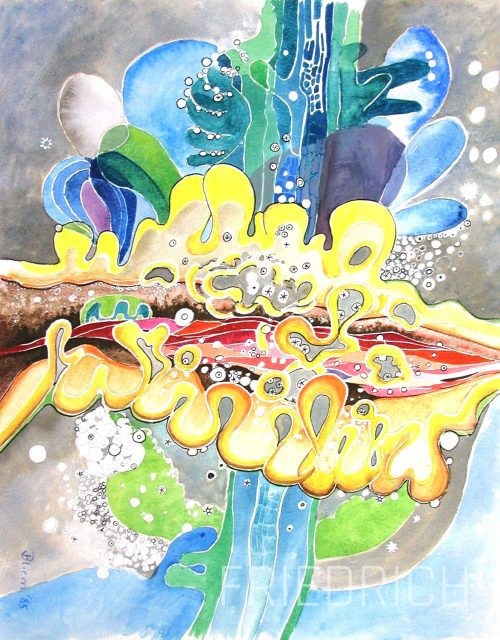
Watercolour, 30×45 cm
1987
Were you always going to be a scientist?
No, not really. Like so many youngsters I had a chemistry set and developed a fascination for chemistry, but the continuous smell of turps and oil in our house always drew me back to drawing and painting. Music was simply another form of expression. The intensive engagement in music led me to question the connection between music and art. I was convinced there was a physical connection, but also realised that I simply didn´t have the theoretical knowledge to proceed. This was the sole reason for choosing a study programme with a broad curriculum both in biology and engineering over art school.
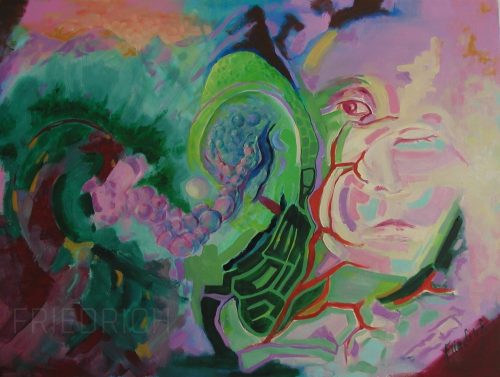
Oils on panel, 50×70 cm
2023
And what about art – have you always enjoyed it?
Well, yes and no. I wouldn´t speak of joy. My relationship with Art was set in a much deeper fashion as just to be enjoyed. It was an intuitive means of expression that came easily, be it fine art or music, which found some success, even in school days, and of course in which I reveled. But it also stemmed from an admiration for my father and our complex relationship.
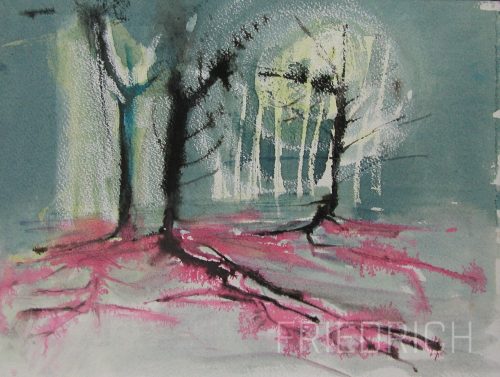
Watercolour, 30×40 cm
1988
What or who are your most important artistic influences?
Of course my father, whose work was largely impressionistic. And Rudolf Macek, who was clearly an expressionist of the 1950´s and 60´s. And from the public figures first and foremost they were and are Franz Marc, Wassily Kandinsky, August Renoir; painters of the romantic period, such as Ferdinand Waldmüller, and of course the old masters such as Jan Vermeer or Salomon van Ruysdael.
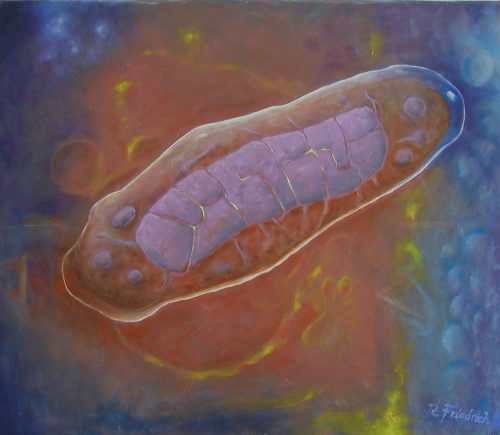
Oils on linen, 50×60 cm
2024
How do you make your art?
Today I only paint, on canvas or panels, in oils, sometimes with a draft drawing in acrylic. The Cambridge atmosphere lends itself to watercolours, which is well accepted.
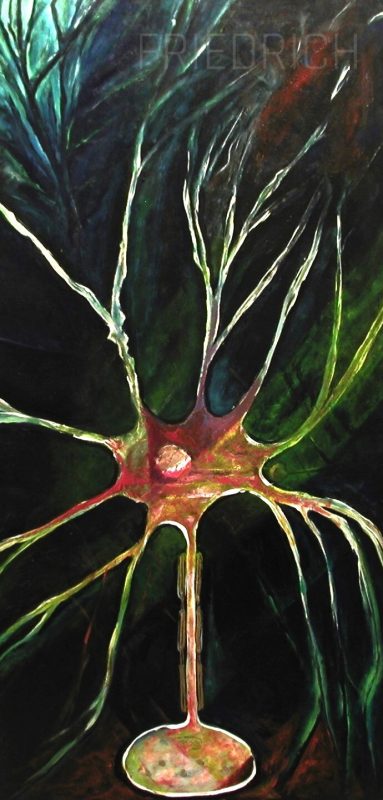
Acrylics and oils on panel, 70×135 cm
1985
Does your art influence your science at all, or are they separate worlds?
Whereas my scientific subjects definitely reflect my knowledge of cell biology, art has tuned my visual sensitivity to aesthetics in science and engineering, e.g. a factory with its piping systems or SEM photos of fungal hyphae and conidia. This has even, to some extent, determined significant professional choices I have made.
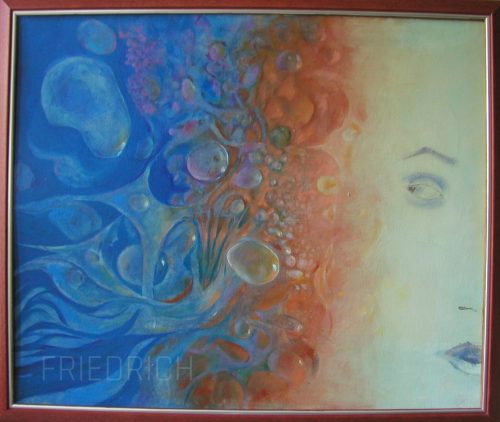
Oils on panel, 50×60 cm
2024
What are you thinking of working on next?
I will continue to expand on my scientific themes, one of which is the concept of evolution. But I also have a “macrobiological” subject, in which I seek to capture the essence of animals in their environment.
And presently I am preparing for 2 exhibitions.
How can people find more about you?
I have a website: www.sciart.at and am presented on the website https://sciencemeets.art/.
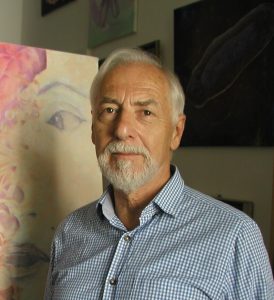


 (2 votes)
(2 votes)